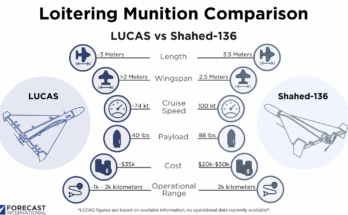
U.S. President Joe Biden has asked Congress to approve $106 billion worth of supplemental funding to aid Ukraine and Israel, and for other military and domestic needs.
Nearly 60 percent of the request, or some $61.4 billion, is for Ukraine, where military equipment needs remain in full force. The Ukraine portion of the supplemental includes $30 billion for equipment and replenishing stocks of donated equipment from the U.S.; $14.4 billion for Department of Defense military intelligence and other support in Ukraine; and nearly $17 billion for economic and humanitarian aid.
The Biden administration wants another $14.3 billion for Israel. Of that, around $10.6 billion would flow through the DoD so support the procurement of air and missile defense equipment, replenishing U.S. stocks of donated equipment, and for industrial base investment. Another $3.7 billion is for the State Department for foreign military financing and embassy support.
The request also addresses U.S. military requirements in the Indo-Pacific theater. The administration wants $3.4 billion for the submarine industrial base, which has been struggling with increased demand of Virginia class attack subs and Columbia class ballistic missile subs. The State Department would also receive $2 billion for foreign military financing for Indo-Pacific allies and partners. At the same time, request includes $2 billion to provide an alternative to Chinese financing in developing countries.
The proposed spending package also includes $13.6 billion for U.S. border protection efforts.
Shaun's deep-rooted interest in military equipment continues in his role as a senior defense analyst with a focus on the United States. He played an integral role in the development of Forecast International's U.S. Defense Budget Forecast, an interactive online product that tracks Pentagon acquisition programs throughout the congressional budget process. As editor of International Military Markets – North America, Shaun has cultivated a deep understanding of the vast defense markets in the United States and Canada. He is a regular contributor to Forecast International's Defense & Security Monitor blog and has co-authored white papers on global defense spending and various military programs.




